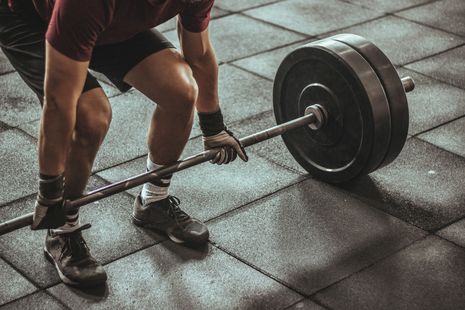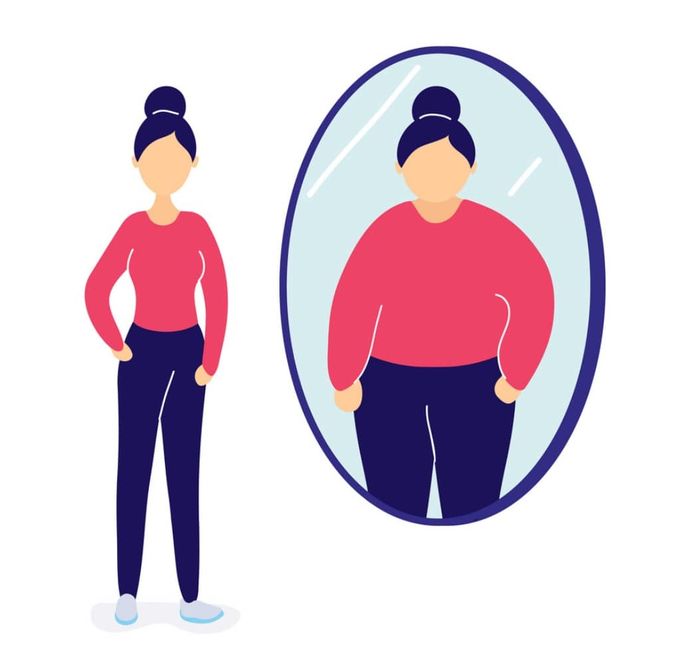Sport is an art, ‘aesthetics is a blueprint’
‘You can’t lose a weightlifting session:’ Naima Clarvis explores the increasing popularity of weightlifting and the shift from its aesthetic goals to functional benefits

For anyone perusing the lifestyle section of a newspaper, an Instagram explore-feed, or the excited adverts that jump out at you on public transport, it’s hard to miss the fact that gym enthusiasm – especially for weight-lifting – is at an all-time high. The benefits are plentiful and inarguable: Sainsbury’s basket brimming and hefty? Light work! Horrified by all forms of calcium? Lucky you, strength-training has boosted those bones.
“Weight-bearing activity has been home to a recent and ongoing social revolution in the exercise realm”
Of course, any type of exercise you can do will work wonders for your health, but weight-bearing activity has played host to a recent and ongoing social revolution in the exercise realm. From powerlifting to dashing a couple of dumbbell routines into the weekly oeuvre, I interviewed three people who all regularly do this hobby, to see what they had to say.
First, we went back to basics. All three of my interviewees had experience in previous sports. Ayo, now powerlifting at university, spoke fondly of his days in Magdalene’s football club, Gwenno – less fondly – of her relationship with running, and Jenna of her training on the tennis team.
Ayo got into weights through being spotted (pardon the pun), eventually relenting to a friend, a powerlifter himself, who was sure he had ‘what it takes’. But something all three agreed upon was that the highlight is really ‘what it brings’. They all called attention to a change of perspective when they started to strength train. Ayo summed it up aptly with the fact that “you can’t lose a weightlifting session” and this ‘shift in metric’ was something that, for Gwenno, came as a relief. In her days as a runner, she felt fixated: on “the length of time, the distance, the numbers,” “trying to get smaller.” Perhaps tellingly, this attitude ended in injury, and now she balances cardio with weights, leading to a healthier focus on “how I feel, not how I look.”
Strength-training can of course change your appearance, but it’s liberating that, for women at least, this goes against the still idealised, waif-like body standard. Jenna too had experimented with “picking up a dumbbell” and “only training lower body because you think that’s what you’re supposed to do as a girl.” The breakthrough came when she was given a professional training plan through S&C sessions at tennis. She spoke of how she “absorbed it like a sponge,” as it shifted her focus to realising the functional benefits for her tennis-playing. Now also powerlifting at Cambridge, her emphasis has become “strength, rather than aesthetics.”
“Although weightlifting may turn one away from the chase for a smaller body, it is not exempt from the world of body dysmorphia.”
Because although weightlifting may turn one away from the chase for a smaller body, it is not exempt from the world of body dysmorphia. It’s perfectly valid to train for aesthetics, although Jenna points out that you might not get very far; a desire to “look good is not going to get you through that kind of exercise.” And while true for the majority, the toxic world of ‘steroid-infused athletes’ that we see on Instagram, the ‘5am what’s your excuse?’ gym-fluencers – who Gwenno notes, have often themselves been through an eating disorder and “have quite a large fanbase who are at different levels of recovery” – may lead some into an aesthetic-trap.
Ayo’s study of medicine and generally analytical attitude has meant he’s avoided the scams of the online ‘gym-bro world.’ His study of diabetes in first year, for example, gives him “something reliable to compare internet diets to,” and he can pretty quickly suss out that the secret key to an influencer’s results is most likely (drum roll)… steroids. He’d rather “stay in [his] lane and keep it realistic.” Ayo’s motivation is “objective progression,” and his face lights up as he talks me over the satisfaction in “looking at someone twice as strong as you,” working out how long it took them to get there, and then how you can realistically achieve the same – he doesn’t “believe in miracles.”
This placement of value outside of aesthetics is a way that Gwenno reckons we can combat the toxic side of the gym-fluencer world. She mentions an Instagram runner who “runs to find her nearest sandwich shop,” and grins when she remembers ‘compliment guy’, who sets targets like exercising “until he’s found someone with a great smile and told them so.”
When done for the right reasons, the specific boom in female strength-training is a brilliant social progression, especially since strength and power have historically been so allied with masculinity. In 2006, a study found that only 20% of women engaged in strength training, the ratio of men to women in the free weights section 27:1. Up to 26.9% in 2022, it is still hard for women and non-binary people to feel comfortable in the weights section: it’s often dominated by men which Gwenno noted “can be intimidating,” and some are simply “overtly creepy.”
But this is luckily less and less the case. Gwenno had not had any experiences of verbal harassment and Jenna said that with all of the instances she’s reported, staff have been “immediately on the case.” Ayo observed that numbers of women are rising in his local Puregym and Gwenno joyfully remarked how she’s seeing more and more older women lifting weights. Jenna’s words on the matter were heartening: “it’s your gym. Even more so than [someone] who’s being a menace…you have a right to not being put off.”
Gwenno did give me a (hopefully) anomalous anecdote, leading me on with the exclamation that her home gym is “packed with girls of 14, 15.” That’s fab! I cried. But my spirits sunk as she described how they “just sit there to watch their boyfriends and help them put the weights on.” She said she feels like shouting “You’re dressed for it for Christ’s sake - you can do it too!” Luckily, this pure-gym edition of the doting housewife doesn’t seem to be the case across the country, but it is a reminder to anyone and everyone who so desires to unashamedly use the weights section.
The theme that all three come back to is that additional self-improvement that seems to come from this activity. Of course, it brings the rush common to most sports, of ‘how far you can push yourself.’ But, as Jenna points out, “it’s extremely transferable” and not just in terms of fitness. Strength matters first and foremost, and this also comes with an increased mental resilience. The recent boom in uptake among women is underscored by a subtle finger to Western beauty standards: I won’t be smaller, but I will empower my body, ready to fend for myself. For Ayo, the ‘steps and stages’ in performing the movement; the “hinge’ of your body, how close [you are] to the bar,” instils in him a meditative focus: “One thing I hadn’t realised is that powerlifting is an art.” These weightlifters’ final advice? Ayo says to do what makes you proud of yourself, Jenna that “people aren’t judging, everyone has started somewhere.” Gwenno would like to take this opportunity to remind you that it can make you rather stiff. Her last words of wisdom? “Do stretch.”
 Comment / Anti-trans societies won’t make women safer14 November 2025
Comment / Anti-trans societies won’t make women safer14 November 2025 News / Controversial women’s society receives over £13,000 in donations14 November 2025
News / Controversial women’s society receives over £13,000 in donations14 November 2025 Comment / Be mindful of non-students in your societies12 November 2025
Comment / Be mindful of non-students in your societies12 November 2025 News / Stolen plate returned to Caius after 115 years12 November 2025
News / Stolen plate returned to Caius after 115 years12 November 2025 Theatre / The sultry illusions and shattered selves of A Streetcar Named Desire13 November 2025
Theatre / The sultry illusions and shattered selves of A Streetcar Named Desire13 November 2025










